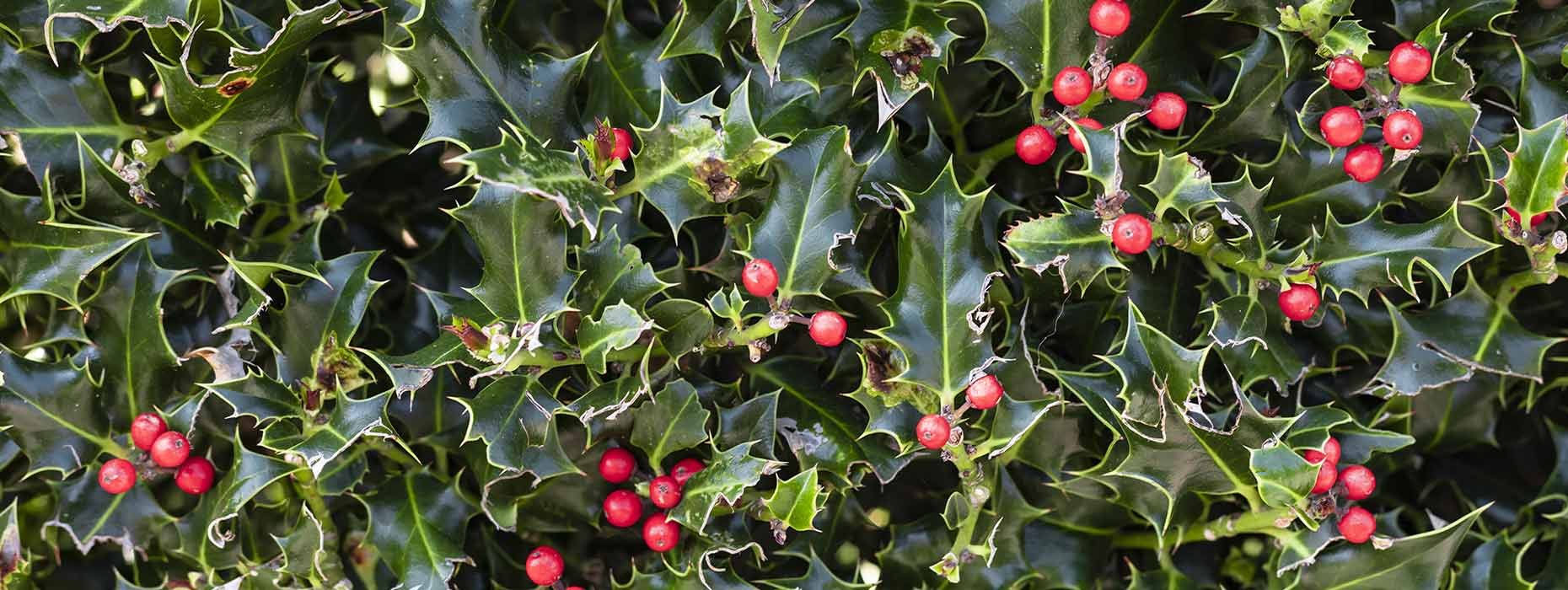
Hollies are among the versatile plants in the landscape, withstanding both drought and cold, which certainly lends to their popularity. Using plants with many textures and colors is an important consideration when planning your landscape. And hollies can provide excellent color and texture contrast. Some have a coarse texture and dark green color, such as ‘Burford’ holly. Others, such as dwarf yaupon holly, have a much more delicate texture and lighter color.
Landscape uses of hollies can vary almost as much as the different shapes, sizes, textures, and colors they come in. They function as foundation plants and for screens, hedges, accent plants, mass planting, or specimen trees.
As with any plant, consider the mature plant’s ultimate size and shape when you select a holly. The three-foot Foster holly at the nursery can grow upwards of 40 feet and spread out to 20 feet. Make sure to allow each plant plenty of room for growth and consider the appearance of the landscape years from now.
Many hollies produce beautiful clusters of colorful berries in the fall or winter. They also provide food for birds and other wildlife. Consider placing these plants where others can see their showy display of berries. Allowing sunlight to hit the fruit provides an interesting contrast when you’re looking from inside the house or another vantage point. You may want to select hollies that produce yellow or orange berries in areas of lower light so that they will stand out better.
Hollies are dioecious, meaning the male and female flowers are produced on different plants, and only the females produce the berries. A male plant must be near a female plant for pollination. If your neighbor next door has the same species holly and has a male, it will most likely pollinate your plant. Bees provide some pollination between different species, too, that flower at the same time. Other hollies can set fruit without any pollination.
If you have hollies that have never had berries, the chances are that either you only have a male plant or you have a female with no pollinator nearby. With the number of hollies in landscapes today, this is rarely a problem.
Although hollies are extremely tough once they’re established, they do have some requirements. They prefer well-drained soil that’s amended with organic matter and slightly acidic. Wet soils that are heavily compacted will lead to weak plants. Hollies respond well to mulching and light fertilization. While many will grow in partial shade, most will produce a better berry crop and thrive if given full sunlight.
For a tough, durable, and attractive landscape plant, consider using hollies.
Timothy Daly is an Agricultural and Natural resource Agent with the University of Georgia Extension Gwinnett County. He can be reached at 678-377-4011 or tdaly@uga.edu.


